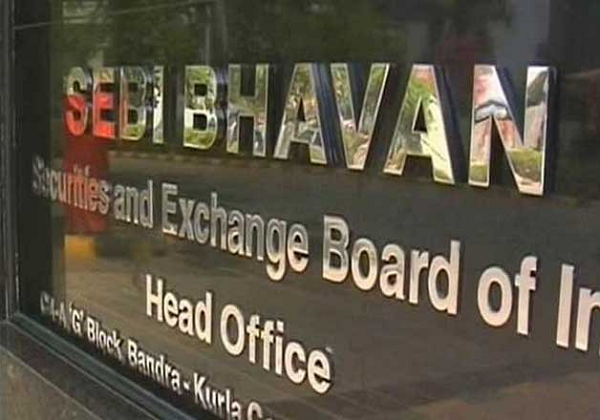
by admin | May 25, 2021 | Markets, Technology
 By Sourabh Kulesh, New Delhi, (IANS) India is among the top five countries in the world to be attacked by ransomware — malware that forces its victims to pay a ransom through certain online payment methods in order to grant access to their systems, or to get their data back, says an executive from Russia-based software security group Kaspersky Lab.
By Sourabh Kulesh, New Delhi, (IANS) India is among the top five countries in the world to be attacked by ransomware — malware that forces its victims to pay a ransom through certain online payment methods in order to grant access to their systems, or to get their data back, says an executive from Russia-based software security group Kaspersky Lab.
“Ransomware attacks are high in India and it is one the top five countries that has most infections,” Vitaly Kamluk, Head of APAC Global Research and Analysis Team, Kaspersky Lab, told IANS.
According to statistics presented by Kamluk during a roundtable discussion on “Security Threat landscape” here on Friday, India takes the first spot in the list of countries that were attacked by Teslacrypt ransomware in March-May 2016 and ranked fourth in the countries that was attacked by Locky ransomware during the same period.
In India, while 11,674 users were attacked by TeslaCrypt ransomware during March-May 2016, 564 users were attacked by Locky ransomware during the same period.
Ransomware is a type of malware that prevents or limits users from accessing their system.
Locky is a Windows ransomware infection that was released in the middle of February 2016. This ransomware infection affects all versions of Windows.
TeslaCrypt ransomware is now defunct. Its master key was released by the developers and a free decryption tool is now available on the internet.
While explaining the data received by Kaspersky Labs, Kamluk said Karnataka (36.58 per cent) was the most affected state with ransomware with Tamil Nadu (16.72 per cent) taking the next spot.
Next came Maharashtra (10.86 percent), followed by Delhi (10.00 per cent), West Bengal (6.70 per cent), Uttar Pradesh (5.33 per cent), Telangana (4.54 per cent), Kerala (3.87 per cent), Gujarat (2.35 per cent) and Haryana (1.96 per cent) at the last spot.
While talking about the global trends, Kamluk said there are majorly five types of ransomware that are making the rounds on the internet today — encryption ransomware, master boot record (MBR) ransomware, screen locker, ransomware encrypting web servers and mobile device ransomware, which is majorly affecting Android devices.
Kamluk noted that internet users who are not aware are the entities most prone to ransomware attacks.
“Popular propagation methods of the infection include infected websites, malvertising (malicious advertising), transfer of affected file via e-mail – such as documents or multimedia files — or instant message and social networks,” he noted.
While answering a question about whether to pay or not to pay to get the data back, Kamluk said, “an attacked user should not pay the ransom as there is no guarantee that the attacker will release a key to you”.
To be safe or to avoid data loss after being attacked by a cyber criminal, Kemluk advised the users to have backups and keep it in a safe place. He said users should use reliable antivirus solution and update them regularly to patch any vulnerable loopholes.
He said governments and antivirus service companies should work together to check the cyber attacks.
“CoinVault decryptor was built by Kaspersky Lab and the Netherlands’ National High Tech Crime Unit to counter such attacks,” he noted, adding that thousands of decryption keys are available for CoinVault, Bitcryptor and CryptXXX infections with the company.
On being asked, will there be a decline in antivirus software usage after the launch of hardware security modules such as “crypto-level security in hardware” in microprocessors, Kemluk said, “Antivirus software is kind of a personal advisor. Unless you have a very technical friend to reverse engineer the threat, you will need these softwares to do that work for you. Antivirus softwares are going to stay because developers will be developing new softwares over time.”
Kaspersky is now rolling out 360-degree security solutions for enterprises, Altaf Halde, Managing Director (South Asia) Kaspersky Lab, India said.
“We have started offering very focussed services to the enterprises, such as solutions for data centres, light agent solution for virtualised environment that does not degrade its speed and performance and solutions for industrial security,” Halde noted.
(Sourabh Kulesh can be contacted at sourabh.k@ians.in)

by admin | May 25, 2021 | Opinions
 By Amulya Ganguli, In addition to the NGOs, including the one run by Teesta Setalvad, the saffron brotherhood’s new target is a formidable one – Reserve Bank of India (RBI) Governor Raghuram Rajan.
By Amulya Ganguli, In addition to the NGOs, including the one run by Teesta Setalvad, the saffron brotherhood’s new target is a formidable one – Reserve Bank of India (RBI) Governor Raghuram Rajan.
Till now, the Hindutva camp hadn’t trained its guns on one so high who is not a politician. There is little doubt, however, that the Sangh Parivar’s motive is political.
The attack on Rajan is not a frontal one. It is a flanking movement with none other than the new Bharatiya Janata Party (BJP) Rajya Sabha member, the perennially combative Subramanian Swamy, leading the charge.
It is not clear if the targeting of Rajan has the approval of the BJP’s top brass, for there are conflicting indications.
While Finance Minister Arun Jaitley disapproves of the personal nature of the attacks, he has been silent on the question of extending Rajan’s term beyond September considering that Swamy wants his immediate dismissal.
However, the problem with Swamy’s offensive – he has accused Rajan of acting at the behest US multinationals to damage the Indian small and medium industries – is that the voluble MP cannot always be taken seriously.
The reason is that he is a maverick to beat all mavericks. As a result, he is perceived of as something of a loose cannon who can go off at a tangent from his party’s line.
As much is clear from his earlier backing of the disgraced godman, Asaram Bapu, to the more recent call for building the Ram temple by the year-end, about which the BJP has been more than circumspect.
Moreover, he is supposed to have been elevated to the Rajya Sabha only to serve a specific purpose – that of needling the Nehru-Gandhis – and not open fire at random.
Swamy has been performing the first task with considerable zeal, pursuing the allegations against the Congress’s first family in the National Herald and AgustaWestland cases.
More recently, he has called upon the Enforcement Directorate to probe the supposed transgressions of the business deals of Robert Vadra, the first family’s son-in-law.
In the midst of these endeavours, the sudden turning of his attention to Rajan is surprising.
In view of the government’s eagerness to maintain friendly ties with the corporate sector, the latter’s unfavourable reaction to Swamy’s antics was only to be expected. The Confederation of Indian Industry has already expressed its displeasure.
None of this is unexpected, for Rajan is known to be a favourite of India Inc. and of the media, especially the financial newspapers.
Narendra Modi’s evasive statement on the issue – he told Wall Street Journal that Rajan’s tenure can be of no interest to the media – is unlikely to clear the scene.
In any event, Modi’s probable view is that nothing should be of interest to the media, which explains why he doesn’t hold any press conferences.
The hullabaloo created by Swamy appears to have persuaded Rajan to decide not to seek a second term although he has described the controversy as evidence of a “noisy” democracy and the “sign of its vibrancy”.
It is possible that Rajan’s observation about India being the king in a land of the blind hasn’t pleased the BJP.
Besides, he is something of an odd man out where the Hindutva camp is concerned, being a typical representative of the urbane, English-speaking, secular establishment that is vastly different from the Hindi-speaking, conservative-minded present-day rulers.
It is not impossible, therefore, that the Rashtriya Swayamsevak Sangh (RSS), the BJP’s mentor, wants to see the back of him.
After all, the RSS has succeeded in placing its nominees in most of the institutions – the Indian Council of Historical Research (ICHR), the National Book Trust, the Film and Television Institute, the Central Board of Film Certification, and so on.
The objective behind all these appointments was, first, to find sinecures for its followers and, secondly, to peddle the pro-Hindu agenda. So, why should the RBI be left in the hands of a purported secularist?
It goes without saying, however, that if India Inc’s blue-eyed boy quits office, the initial effect on the market will be worrisome.
That is not something which Modi will appreciate. But he has generally had to walk a tight rope between the predilections of the RSS and his own more open-minded attitude. There has been a constant give-and-take between him and the Nagpur patriarchs in this respect.
In some matters, Modi has had the upper hand such as in persuading the saffron fundamentalists to go easy on their ghar wapsi and love jehad campaigns.
In others, he has given way to the RSS as, for instance, in the appointments of unworthy nominees to the ICHR and other institutions.
The Rajan affair will be a major test for Modi. Will he bow to the RSS or will he allow his pro-business instincts to prevail ?
(Amulya Ganguli is a political analyst. The views expressed are personal. He can be reached at amulyaganguli@gmail.com <mailto:amulyaganguli@gmail.com>)

by admin | May 25, 2021 | Economy, News
 By Meghna Mital, New Delhi, (IANS) The World Bank has dropped the use of developing nation tag for India in its specialised reports and instead classifies it as a “lower-middle-income” economy in South Asia, a top official has said.
By Meghna Mital, New Delhi, (IANS) The World Bank has dropped the use of developing nation tag for India in its specialised reports and instead classifies it as a “lower-middle-income” economy in South Asia, a top official has said.
“In our World Development Indicators publication, we’ve stopped grouping low- and middle-income countries together as ‘developing countries’. For analytical purposes, India continues to be classified as lower-middle-income economy,” World Bank Data Scientist Tariq Khokhar told IANS.
“We are not changing term ‘developing countries’ or ‘developing world’ in our general work but when it comes to presenting specialized data, we will use more precise groupings of countries,” Khokhar said in an e-mail interview, adding, the term developing country was no more useful for analytical purposes.
Accordingly, while India will be referred to as a lower-middle-income economy in all of World Bank’s analytical reports, it may be referred to as a developing country only in some of the generic communications.
The decision to stop using the term developing countries, the World Bank specialist said, has been taken in view of the word having no universal definition, causing countries like Malaysia and Malawi to be come under the same category earlier.
“There is no internationally agreed definition of the term ‘developing world’. There’s often a big gap between the countries within the developing world grouping — which make, for instance, Malaysia and Malawi both developing countries,” Khokhar said.
Malaysia has a gross domestic product of $338.1 billion, according to the 2014 figures, while Malawi’s stands at a merely $4.258 billion. Now while Malaysia is referred to as upper middle-income economy, Malawi falls in a low-income classification.
As per the classification, Afghanistan, Bangladesh and Nepal are low-income economies, Pakistan and Sri Lanka fall under lower-middle-income, Brazil, South Africa and China under upper middle income, Russia and Singapore under high-income-Non-OECD and the US under high income-OECD.
Meghna Mital can be reached at meghna.m@ians.in)

by admin | May 25, 2021 | Markets, Opinions, Technology
 By Tanay Sukumar, Four of five Indians could afford the internet if data costs fell by 66 percent, according to a Facebook-commissioned report on Internet access. But Indian telecom operators already run data services at a 11 percent loss, making cost-cutting difficult.
By Tanay Sukumar, Four of five Indians could afford the internet if data costs fell by 66 percent, according to a Facebook-commissioned report on Internet access. But Indian telecom operators already run data services at a 11 percent loss, making cost-cutting difficult.
The statistics mean that a data plan currently priced at Rs.100 should not cost more than Rs.34 if India has to make the internet affordable for 80 percent of its population.
But the adverse economics imply this cannot happen without intervention from the government – whose Rs.20,000 crore ($2.9 billion) plan to connect each of Indias 250,000 panchayats with broadband by 2018 is three years behind schedule.
The internet reached 29 percent of Indians – 354 million users – in September 2015, IndiaSpend reported. It could rise to 39 percent, or 462 million users, by June 2016.
But if it were to reach 100 percent, Indias GDP could be increased by an extra $1 trillion by 2020, according to the Facebook-commissioned report, published this month. To put this in perspective, Indias GDP crossed the $2 trillion mark for the first time in 2014, according to World Bank data.
To optimise data costs, the report considered 500 MB data plans, classifying them affordable if each cost less than five percent of a persons monthly income.
The report, titled Connecting the world: Ten mechanisms for global inclusion, is based on a study done by PricewaterhouseCoopers for Facebook.
Internet access drives up GDP
The Facebook report said that global GDP could grow by an additional $6.7 trillion by 2020, if the internet reaches every human being. If that happens, the GDP of China and India could reach $2.089 trillion – nearly a third of the hypothetical world output.
Also, universal internet access can bring half a billion people worldwide out of poverty, according to the report.
High data costs in developing countries
However, data costs in India, as in several other developing countries, are a major barrier.
While 92 percent people in South Asia live in range of a 2G network, no more than 17 percent can afford a 500 MB monthly data plan. Two other regions – sub-Saharan Africa (11 percent) and Middle East and North Africa (17 percent) – are comparable to South Asia. In contrast, 94 percent of North Americans can afford such a data plan.
Prices need to drop by close to 70 percent of todays average retail price for 80 percent of the worlds population, said the report. In Ethiopia, a 500 MB data plan currently costs 50 times what it should for widespread internet affordability. (Widespread is defined as reaching 80 percent of citizens.)
As it stands currently, only two percent Indians can afford to watch a five-minute standard definition video daily. If you add a two-minute HD video as well, less than one percent can afford it.
The report said that in India, internet usage is growing but many are disengaged and many more remain unconnected. According to a February survey by the Pew Research Centre, 22 percent respondents in India said they use the internet at least occasionally or have a smartphone.
But are lower costs possible?
The report cited a JP Morgan analysis to show that Indian data operators make a negative margin of 11 percent from data sales. Giving examples of other developing countries with negative margins, the report said: Operators in most of these markets already charge very low prices and have negative margins on data, which makes it difficult for them to cut prices further.
Indonesias negative margin is 197 percent; in comparison, profit margins in Japan are 46 percent.
In India, nearly 70 percent of connections are on 2G networks, but these data services are no longer profitable for telecom operators. Bharti Airtel, for instance, needs more than 1,000 rural users per site per month to ensure its 2G data services break even. Providing voice services over 2G is more profitable – the company would need no more than 480 subscribers per site per month to break even.
Drawing connections with Zuckerbergs Internet.org agenda?
The study done for Facebook advocates internet access in developing countries, which may be seen as connected to the social media giants controversial Internet.org project. The Guardian observed: The focus on cost reductions (in the report) marries with Facebooks own Internet.org project, which is aimed at partnering carriers in developing nations to give low-cost internet access.
Internet.org had come under criticism from net neutrality advocates around the world. In India, its platform Free Basics was blocked by the Telecom Regulatory Authority of India (TRAI) in February this year. Founder Mark Zuckerberg had then written: Connecting India is an important goal we wont give up on, because more than a billion people in India dont have access to the internet.
According to the study, which echoed Zuckerbergs thoughts, 56 percent of the world is still not online. Bringing them online would create millions of new jobs, develop vast new markets, and lift millions out of poverty.
(30.05.2016 – In arrangement with IndiaSpend.org, a data-driven, non-profit, public interest journalism platform. Tanay Sukumar is a freelance journalist. The views expressed are those of IndiaSpend. The author can be contacted at respond@indiaspend.org)

by admin | May 25, 2021 | Investing, Opinions
 By Meghna Mittal New Delhi, (IANS) Breaking new ground in a bid to help civic bodies raise capital for financing infrastructure projects, three such entities will soon issue bonds on a pilot basis, according to a top finance ministry official.
By Meghna Mittal New Delhi, (IANS) Breaking new ground in a bid to help civic bodies raise capital for financing infrastructure projects, three such entities will soon issue bonds on a pilot basis, according to a top finance ministry official.
“The framework and guidelines on municipal bonds are already in place. And now we have three projects that are going through. This will have to be done by the Ministry of Urban Development. They are taking up three cities. If the pilot succeeds, then it gets rolled out (on a wider scale),” the finance ministry official told IANS on condition of anonymity.
Market watchdog SEBI’s regulations for municipal bonds have been in place for one-and-a-half years, but there’s been no further traction beyond that. The pilot in three cities is being seen as an effort to encourage local bodies to sell bonds to the public.
One other intention is to reduce the reliance of civic bodies on banks, which have largely become risk-averse in view of their rising non-performing assets (NPAs).
Speaking on the size of the bonds, the official said that the pilot issue will be sufficiently large as the overheads involved are high.
A conducive bond market and supportive private sector will support the pilot, he said.
Though the cities chosen for the pilot have not been disclosed, a source in the finance ministry spelt out the criteria: “The municipal bodies should have (a sufficient) budget in hand and the capacity to do this (execute large projects). It could be (through) a special purpose vehicle (SPV) kind of arrangement that is commercially viable, preferably through PPP (public private partnership) mode.”
The official said that since all municipalities may not have the do-it-all strength on their balance sheets, the guidelines offer various options in structuring.
As for the modalities, an escrow account will be created for a particular infrastructure project. Some of the municipal taxes may be earmarked for a particular project or cross subsidy may be given for taking up a project in a slum area, the official said.
“Most important, they have to decide for which project it (the money) is going to be,” he said.
A credit rating system for infrastructure projects is also being worked upon, which will be in place this year, the finance ministry official said.
“We are working on the rating project. The system will be in place this year. We are in discussion with credit rating agencies for a new system,” he said.
Credit rating agencies like Crisil and India Ratings are collectively working on a new system for infrastructure projects that will use a different methodology than for corporate ratings.
(Meghna Mittal can be reached at meghna.m@ians.in)

 By Sourabh Kulesh, New Delhi, (IANS) India is among the top five countries in the world to be attacked by ransomware — malware that forces its victims to pay a ransom through certain online payment methods in order to grant access to their systems, or to get their data back, says an executive from Russia-based software security group Kaspersky Lab.
By Sourabh Kulesh, New Delhi, (IANS) India is among the top five countries in the world to be attacked by ransomware — malware that forces its victims to pay a ransom through certain online payment methods in order to grant access to their systems, or to get their data back, says an executive from Russia-based software security group Kaspersky Lab.



